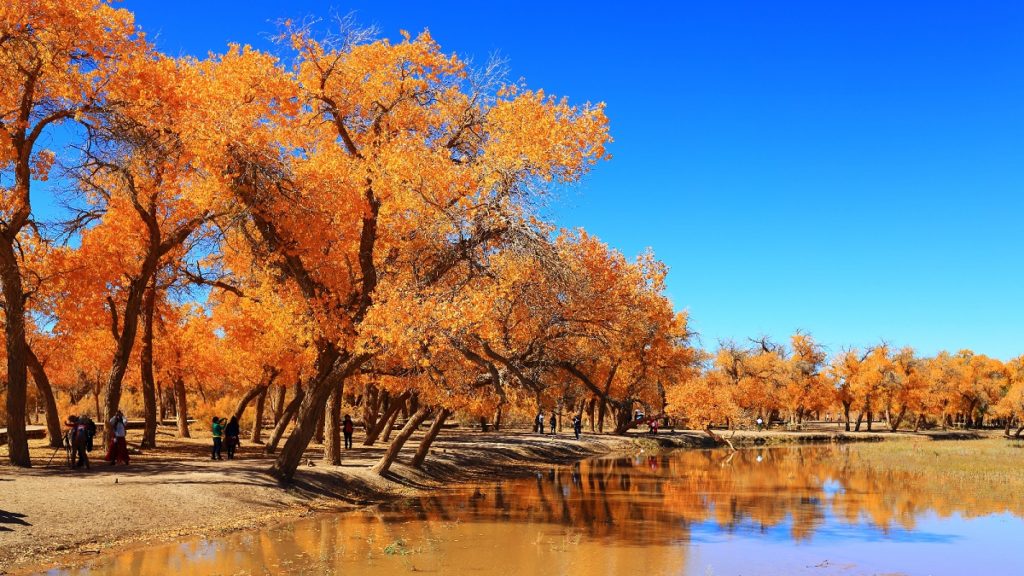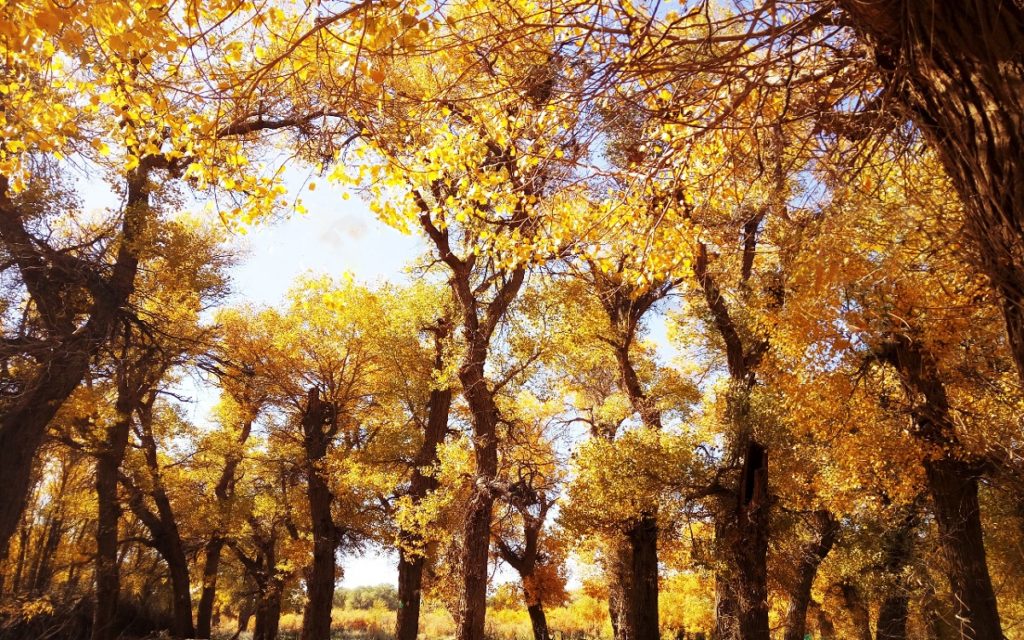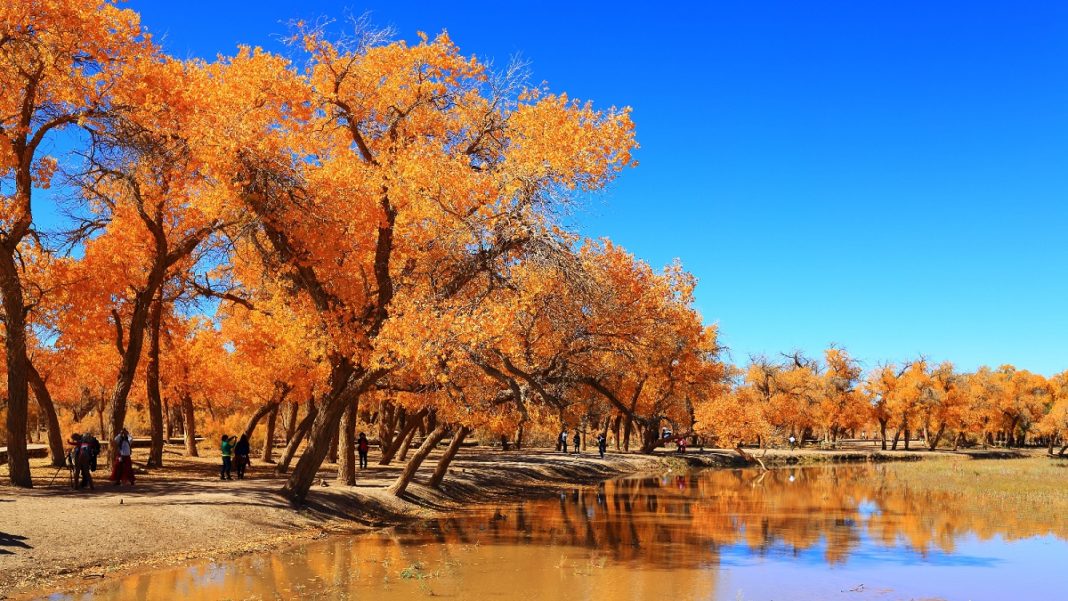The Taklamakan poplar forest is a unique ecosystem found in the heart of the Taklamakan Desert, China. These forests consist of Euphrates poplars (Populus euphratica), also known as desert poplars, which are incredibly resilient trees that can thrive in the harsh desert environment. They are considered living fossils, dating back to the Tertiary period over 60 million years ago. Some of the poplars in these Taklamakan forests are estimated to be over 3,000 years old.

The dominant feature of the landscape is the Populus euphratica trees, also known as the desert poplar. These trees can grow up to 20 meters tall and have adapted to survive in the arid conditions of the desert. Their yellow foliage stands in the backdrop of the sandy desert.

The forest is situated within the Taklimakan Desert, which is renowned for its vast stretches of shifting sand dunes. These dunes can reach impressive heights and create undulating patterns across the landscape.
It is a vast ocean of golden sand stretches endlessly towards the horizon, shimmering under the relentless desert sun. This seemingly endless expanse is broken only by sporadic bursts of vibrant green. These are the Taklamakan poplar forests, tenacious islands of life clinging to existence in the harsh embrace of the desert.
According to the Internet







![[HONORARY PROFESSOR OF RECORD FOR PRACTICE AND EMPIRICAL RESULTS – 2024] RECORD HOLDER CHU BAO QUE (BAC GIANG PROVINCE, VIETNAM)](https://worldmark.world/wp-content/uploads/2024/05/z5401509010514_2898fa0bcee3af78744ceb5f3984a5c8-218x150.jpg)







